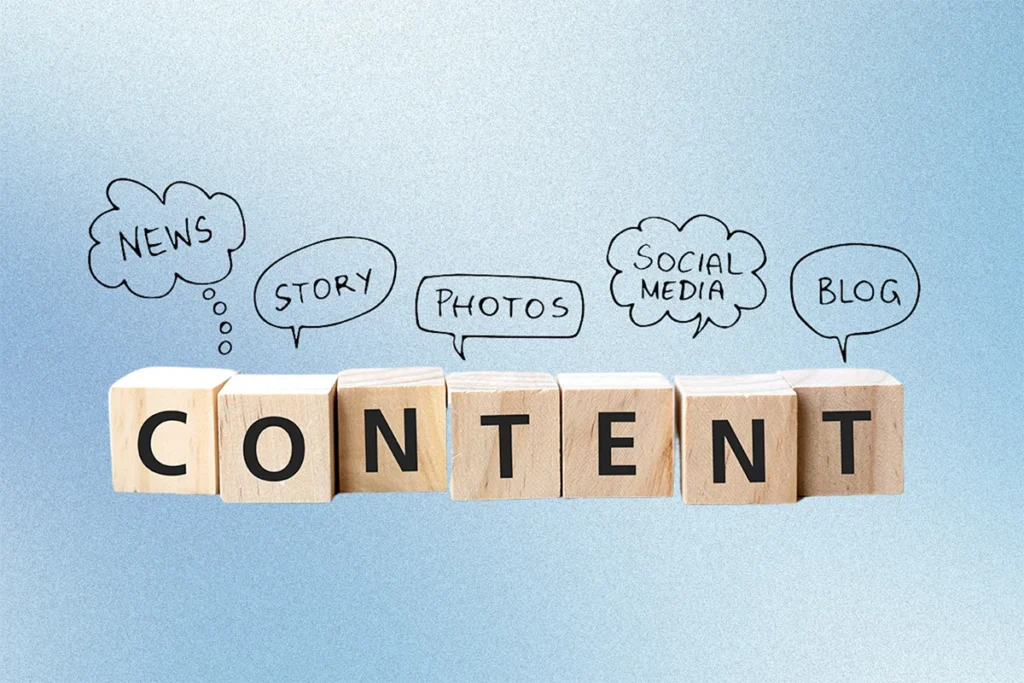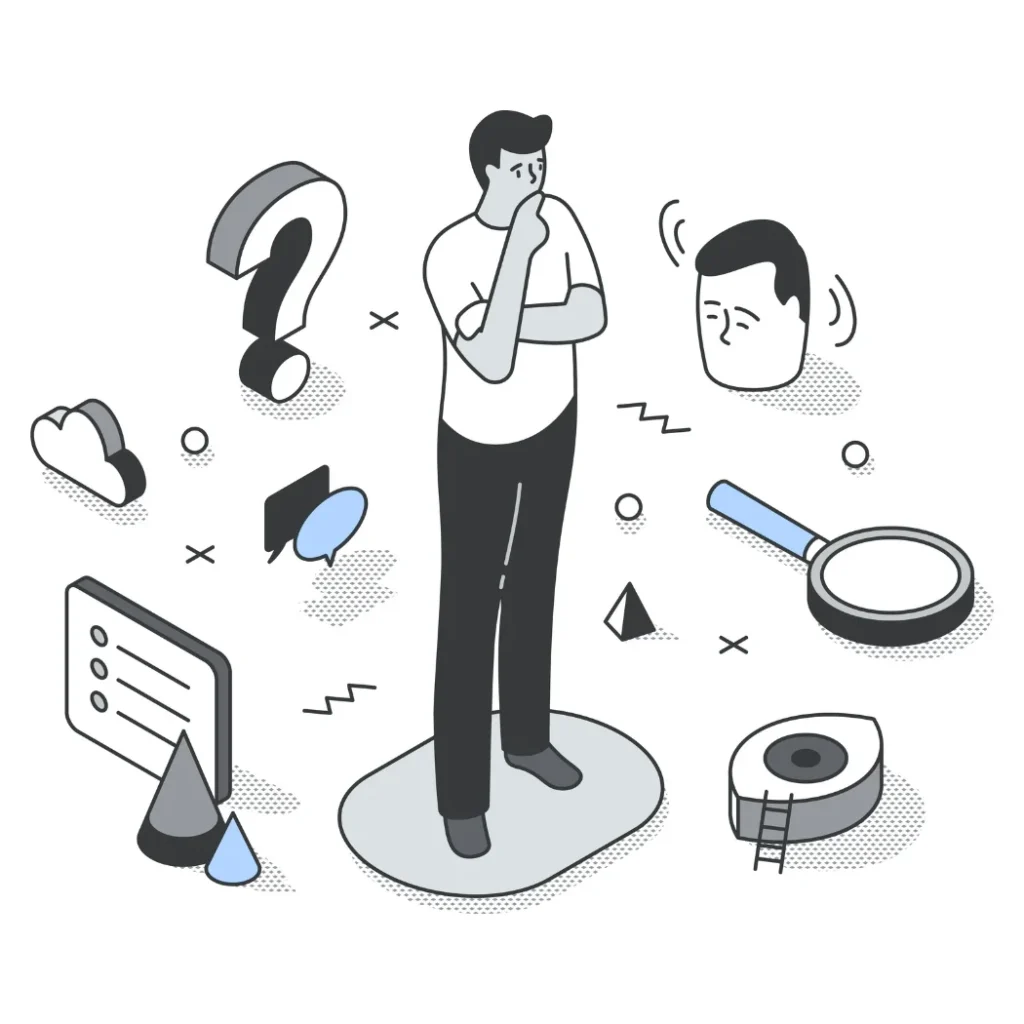Every day, 5.52 billion people1 use the internet to find information, solve problems, and make purchases. So how do you position your business as a go-to source for the solutions they’re searching for? The answer lies in content.
Content marketing is a powerful strategy for establishing your brand as a trusted authority in your industry. By creating and sharing valuable, relevant, and engaging content, you can reach more people and convert your target audience into loyal customers—but how, exactly?
In this guide, we explain everything you need to know about content marketing, how it works, and how it can help your business grow.
Table of Contents:
What Is Content Marketing?

Content marketing is a strategy that involves creating and sharing valuable content to attract, engage, and retain a target audience. This content can come in many forms, like blog posts, social media updates, newsletters, and even photos.
Instead of directly promoting your products or services, content marketing provides useful information that addresses your audience’s needs, interests, and challenges. Considering that 70% of consumers2 would rather learn about a service or product through an article instead of an ad, content marketing is a valuable strategy for any business looking to grow.
Types of Content Marketing Strategies
Content marketing is a powerful tool for driving meaningful results for your business. However, creating great content is only part of the equation. To be effective, you also need to reach the right people through the right distribution channels. That’s where a content marketing strategy comes into play.
An effective content marketing strategy often includes multiple content formats and leverages various platforms to maximize reach and impact. By understanding where your target customer spends their time online and what kind of content resonates with them, you can develop a strategy that drives real results.
Below, we explore different types of content marketing strategies and how businesses can use them to connect with specific audiences.
Blogging
Blogging is a great way to drive traffic to your website, build trust with your audience, and convert readers into loyal customers. In fact, businesses that prioritize blogging see 67% more leads3 on average than brands that don’t.
Blogging involves publishing strategically written articles that address your target customer’s interests, questions, and challenges. The goal is to offer useful information that helps build trust with your readers, positioning your brand as an expert in your field. Blog posts are valuable all on their own, but their impact is maximized when shared directly with your audience in newsletters or on social media.
By regularly posting and sharing high-quality blog content, you can increase website traffic, improve search engine rankings, reach more potential customers, and keep them coming back for more.
Social Media Posts
87% of buyers4 use social media to make shopping decisions. With over 5.22 billion5 people browsing social media around the globe, it’s no wonder brands are joining platforms like Facebook, Instagram, Bluesky, and X (Twitter).
Social media lets businesses connect and engage with current customers, reach new ones, and build a community around their brand. These platforms allow you to post a variety of different kinds of content, such as images, videos, blog posts, and more. By sharing valuable and relevant content on social media, you can increase brand awareness, drive traffic to your website, and build strong relationships with your customers.
73% of content marketers use social media content to market their brand5. If your business isn’t active on social media, you’re already falling behind the competition.
Newsletters
Newsletters are a powerful form of content marketing. In fact, 87% of businesses6 say email marketing is critical for their success.
Newsletters serve as a direct communication channel for businesses to share blog posts, industry news, tips, special offers, and other resources that your audience finds useful. Examples of newsletter content include:
- Product updates: announce new products, services, or features
- Educational content: share tips, how-tos, blog posts, or any other insights your audience might find valuable or entertaining
- Promotional content: run sales and offer coupon codes for exclusive discounts
- Company updates: announce events, milestones, and any other relevant or exciting news
Sharing valuable content through your newsletter builds trust and authority with your subscribers, keeps your brand top of mind, and encourages loyal customer retention.
How Does Content Marketing Work?

Content marketing works by providing your ideal customer with valuable information that addresses their interests, questions, and pain points at every stage of their buyer’s journey. This customer-centric approach involves understanding the different stages that a potential customer goes through before, during, and after making a purchase decision:
- Awareness: First a person becomes aware of a problem or need and begins to search for relevant information.
- Consideration: Once they have clearly defined their problem or need, they begin to research and compare different solutions.
- Decision: Now they have chosen a solution strategy and are evaluating specific products or services to determine which one is best for them.
- Retention: After a purchase is made, the goal is to maintain customer loyalty, provide ongoing value, and encourage repeat business.
By creating content that addresses the specific needs and questions of your audience at each stage of this journey, you can guide them through the sales funnel toward a purchase and keep them coming back for more.
Read on for a more in-depth look at the buyer’s journey and the type of content that resonates with potential customers at each stage.
Awareness Stage

At the awareness stage, the buyer realizes they have a problem or need—but they don’t know what solutions are available yet. So, they start searching for information to better understand their challenge.
For example, a person starts jogging and notices their feet hurt after running, but they don’t know why this is happening. They might search for general information or answers to questions like: “Why do my feet hurt after running?” or “How to prevent foot pain when running.”
The best content types for the awareness stage include:
- Informative Blogs: These answer questions, help identify problems, and introduce possible solutions.
- Social Media Posts: Any kind of engaging post that talks about common problems related to a topic and what to do about it.
Consideration Stage

During the consideration stage, buyers are now aware of their problem. So, their new goal is to research possible solutions and evaluate different options.
The person from our previous example now knows that their foot pain is probably caused by wearing the wrong type of shoes while running. Now, they’re actively researching solutions and searching for queries like: “How to choose the best running shoes” or “Best running shoes for beginners.”
The best content types for the consideration stage include:
- Case Studies: These provide potential customers with real-life examples of how a solution helped solve similar problems.
- Comparison Guides: These compare multiple options, highlighting their differences, advantages, and disadvantages to assist buyers in making informed decisions.
Decision Stage

Once the buyer has decided on a solution, they will act on their choice in the decision stage. Here, your goal is to set yourself apart from the competition and encourage the buyer to take the final step.
For example, our runner has decided to invest in a new pair of running shoes and is now choosing between specific styles, brands, or retailers. This means they are likely searching for things like: “Shoe store near me,” or “[BRAND] running shoe sale.”
The best type of content for the decision stage includes:
- Customer Testimonials and Reviews: These provide social proof and build trust by showcasing real experiences.
- Special Offers: Time-limited discounts or special deals for new customers can create urgency and incentivize immediate purchase decisions.
Retention Stage

Content marketing doesn’t end with a sale. In fact, it’s only the beginning of a lasting relationship with that buyer. Once a customer has made a purchase, the retention stage focuses on maintaining their loyalty and encouraging repeat business. The goal is to provide ongoing value and support to keep customers engaged and your brand top of mind.
For instance, the runner who purchased those new shoes is now using them regularly and running without foot pain. This means the information that will be most valuable to them at this stage would be: “How to maintain running shoes,” or “The best places in [CITY] to jog.”
The best content for retaining customers and keeping them coming back for more includes:
- Personalized Emails: These provide tailored content and special offers based on purchase history and/or preferences, keeping them engaged, informed, and entertained.
- Educational Blogs: They offer valuable information on product use, maintenance, and other related topics, helping customers get the most out of their purchase and reinforcing your brand as a trusted industry expert.
Content Marketing Best Practices for Businesses

A successful content marketing strategy builds trust, establishes authority, and drives meaningful actions. Below are essential content marketing best practices that can help businesses turn content into a powerful marketing tool:
Define Your Goals
The very first step for any business looking to create a successful content marketing strategy is to set goals and clearly outline what you want to achieve. Do you want to increase brand awareness, generate leads, boost search engine rankings, or improve conversations?
Setting specific, measurable goals ensures your content aligns with your business objectives.
Understand Your Target Audience
Research your ideal audience’s interests, pain points, and buying behaviors to create buyer personas. These are like fictional profiles that represent your ideal customer.
The more you understand your audience, the more relevant and impactful your content will be.
Leverage Multiple Formats and Platforms
Once you know who your ideal customer is and what their needs are, you can identify the best ways to reach them. People consume content in different ways, so it’s important to diversify your approach.
Blog posts, emails, and social media updates each serve a unique purpose. Sharing your content across multiple platforms like your website, social media, and newsletters, will maximize your reach and engagement.
Invest in High-Quality Content
No matter what type of content you’re producing, quality always matters more than quantity. Prioritize high-quality, well-researched, and relevant content that reflects your standards as a business and provides value to your audience.
Well-written blogs, professional visuals, and polished emails enhance credibility, build trust, and keep your customers coming back for more.
Create a Content Calendar
Consistency is key to keeping your audience engaged and your business top of mind. Creating a detailed content calendar is a great way to stay organized and align your efforts with business goals.
It also helps ensure your content marketing efforts always support any seasonal campaigns, product launches, events, and more.
Track Key Metrics and Adapt
Content marketing is an ongoing process, and successful strategies require constant refinement. A major advantage of this type of marketing is being able to see what’s working and what isn’t in real time.
You can track your content’s performance using key metrics like website traffic, social shares, engagement rates, lead conversions, and more. This allows you to make informed decisions and adjust your strategy based on real-life data.
Discover How Content Marketing Can Benefit Your Business

Content marketing is an incredible tool for driving traffic, boosting brand awareness, and converting leads into loyal customers. By creating valuable, engaging content that addresses every stage of the buyer’s journey, you can meet your audience’s needs and foster lasting relationships with your customers.
At West County Net, we have years of experience helping businesses just like yours leverage the full potential of content marketing. We’ll work with you directly to craft a customized content strategy that meets your needs, delights your customers, and turns content into a powerful lead-generating tool.
Ready to see what content marketing can do for you? Contact us today!
"*" indicates required fields
References
- Digital around the world — DataReportal – Global Digital Insights. (n.d.). DataReportal – Global Digital Insights. https://datareportal.com/global-digital-overview
- Walters, T., Ph. D., Rose, R., & Content Marketing Institute. (2015). Native Advertising: A Paid Placement in Which the Ad Blends in with the Look and Format of the Surrounding Content. https://contentmarketinginstitute.com/wp-content/uploads/2016/01/NEOMG_Whitepaper_final_11-10-15_lk.pdf
- Content Marketing Infographic | Demand Metric. (n.d.). https://www.demandmetric.com/content/content-marketing-infographic
- Keeton, J. B., & Keeton, J. B. (2024, December 31). The most important social selling statistics for 2025. OptinMonster. https://optinmonster.com/social-selling-statistics/
- Global Social Media Statistics — DataReportal – Global Digital Insights. (n.d.). DataReportal – Global Digital Insights. https://datareportal.com/social-media-users
- The 2023 State of Email Workflows Report. (2023, October 12). Litmus. https://www.litmus.com/resources/state-of-email-workflows
